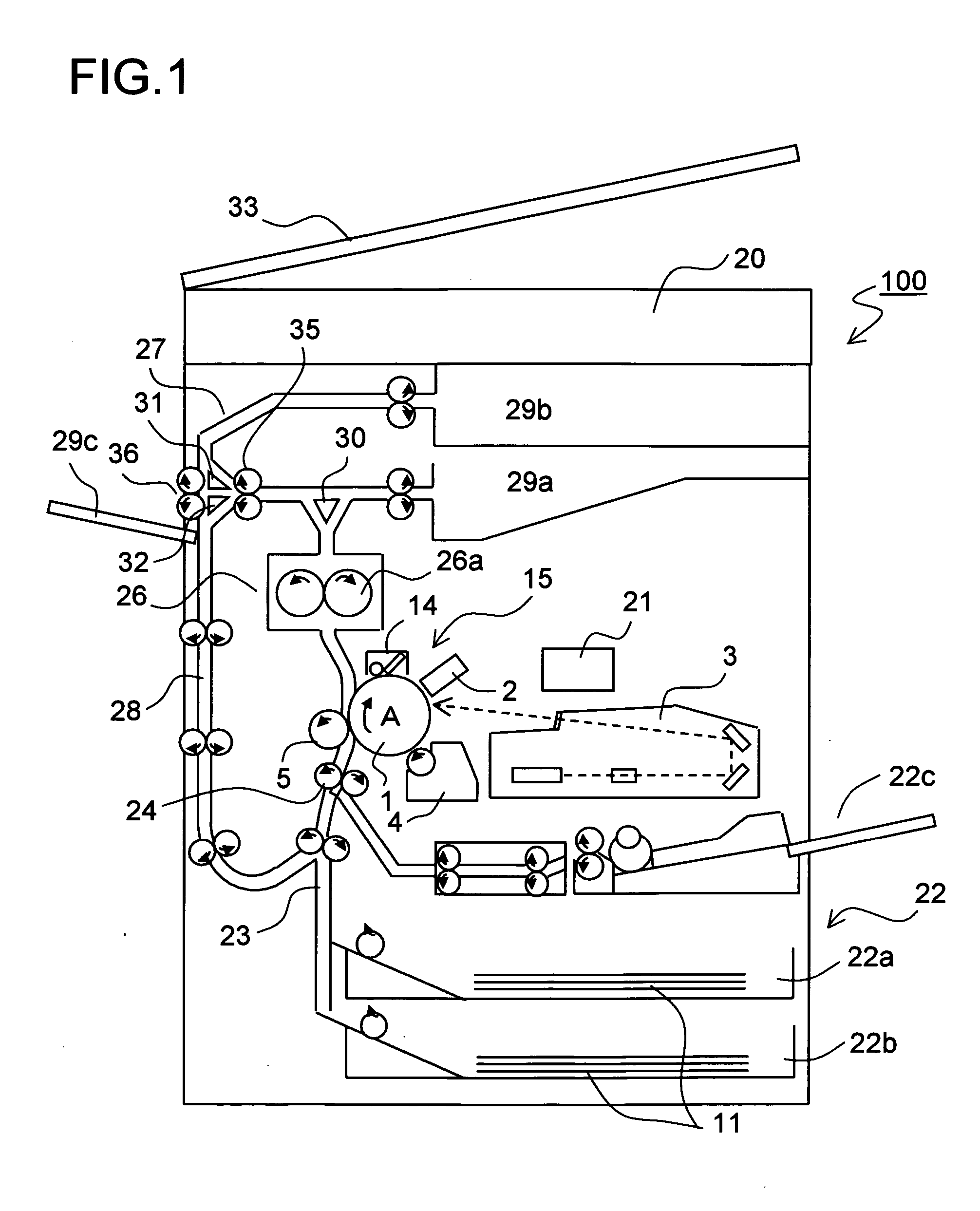Image forming apparatus
- Summary
- Abstract
- Description
- Claims
- Application Information
AI Technical Summary
Benefits of technology
Problems solved by technology
Method used
Image
Examples
first embodiment
[0056]FIG. 2 is a block diagram showing the configuration of the image forming apparatus of the present invention. Such parts as are found also in FIG. 1 are identified with common reference numerals. The image forming apparatus 100 includes the image forming section 15, the image input section 20, an AD converting section 40, a control section 41, a storage section 42, an operation panel 43, a surface potential sensor 44, and other components.
[0057] In a case where the image forming apparatus 100 is a copier as shown in FIG. 1, the image input section 20 is an image reading section that is composed of: a scanning optical system that includes a scanner lamp that illuminates an original document at the time of copying and mirrors that deflect the optical path of the reflected light from the original document; a condenser lens that focuses the reflected light from the original document to form an image; a CCD that converts the thus focused image light into electrical signals; and othe...
second embodiment
[0095]FIGS. 10A, 10B and 10C are timing charts showing how the surface potential is corrected during continuous image formation and after the completion of the image formation in the image forming apparatus of the How the correction is actually performed will be described more specifically with reference to FIGS. 9, 10A, 10B and 10C. Here, a description will be given of, as an example, a case where the surface potential is adjusted by varying the grid voltage of the charger 2.
[0096] Ga represents the reference value determined from the initially set value G0 of the grid voltage and the total number of printed sheets as counted from the initial state of the apparatus. As the total number m of printed sheets increases, the amount of attached discharge products increases and thus the grid resistance gradually increases. It is thus preferable to decrease the reference value from the initially set value G0 accordingly. Thus, as shown in FIG. 10A, by use of the initially set value G0 and...
third embodiment
[0120]FIG. 14 is a flowchart showing how the image forming apparatus of the third embodiment operates. Now, the image forming process of the image forming apparatus will be described according to the steps shown in FIG. 14 with reference to FIGS. 1, 12, 13A, 13B and 13C. First, the humidity inside the apparatus is detected with the humidity sensor 46 (step S1), and the humidity thus detected is stored as an initial humidity in the storage section 42. Next, whether or not image formation is requested by a user is checked (step S2), and, if image formation is requested, the total number of printed sheets is calculated by the printed sheet counter 45 (step S3) and then the control section 41 reads the reference value Ga corresponding to the calculation result from the reference value data that has previously been stored in the storage section 42 (step S4).
[0121] The humidity inside the apparatus is detected anew with the humidity sensor 46 (step S5) so that, based on the difference bet...
PUM
 Login to View More
Login to View More Abstract
Description
Claims
Application Information
 Login to View More
Login to View More - R&D
- Intellectual Property
- Life Sciences
- Materials
- Tech Scout
- Unparalleled Data Quality
- Higher Quality Content
- 60% Fewer Hallucinations
Browse by: Latest US Patents, China's latest patents, Technical Efficacy Thesaurus, Application Domain, Technology Topic, Popular Technical Reports.
© 2025 PatSnap. All rights reserved.Legal|Privacy policy|Modern Slavery Act Transparency Statement|Sitemap|About US| Contact US: help@patsnap.com



